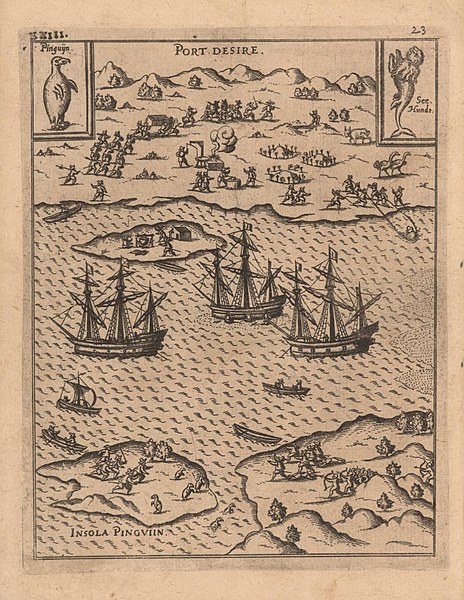Sir Thomas Cavendish was an English explorer and a privateer known as "The Navigator" because he was the first who deliberately tried to emulate Sir Francis Drake and raid the Spanish towns and ships in the Pacific and return by circumnavigating the globe. Magellan's, Loaisa's, Drake's, and Loyola's expeditions had preceded Cavendish in circumnavigating the globe. His first trip and successful circumnavigation made him rich from captured Spanish gold, silk and treasure from the Pacific and the Philippines. His richest prize was the captured 600-ton sailing ship the Manila Galleon Santa Ana. He was knighted by Queen Elizabeth I of England after his return. He later set out for a second raiding and circumnavigation trip but was not as fortunate and died at sea at the age of 31.
An engraving from Henry Holland's Herōologia Anglica (1620). Animum fortuna sequatur is Latin for "May fortune follow courage."
The North Pacific currents and winds used by both the Manila Galleon and Cavendish to get to Guam and the Philippines--the North Pacific Gyre
Thomas Cavendish's circumnavigation
Thomas Cavendish's circumnavigation was a voyage of raid and exploration by English navigator and sailor Thomas Cavendish which took place during the Anglo–Spanish War between 21 July 1586 and 9 September 1588. Following in the footsteps of Francis Drake who circumnavigated the globe, Thomas Cavendish was influenced in an attempt to repeat the feat. As such it was the first deliberately planned voyage of the globe.
Cavendish captures the Spanish treasure galleon Santa Ana off Cabo San Lucas
Cavendish's three English ships in Port Desire
Portrait of Thomas Cavendish
The North Pacific currents and winds used by both the Manila Galleon and Cavendish to get to Guam and the Philippines--the North Pacific Gyre





